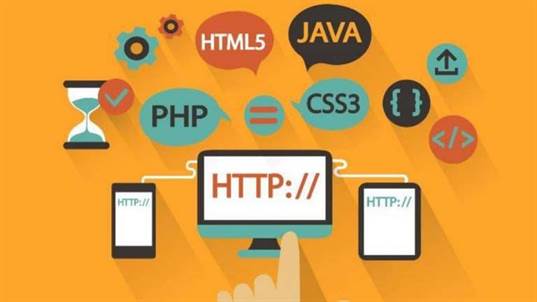Top 3 Cloud Deployment Models You Need To Know About
Содержание
Is considering a cloud environment to improve the operating efficiency for their data and applications. It is part of an industry where strict security and data privacy issues are of the highest importance. Company D wants to use virtualization in their computing infrastructure. Since their data is highly sensitive, they want to restrict access to within company premises only.
The last of the deployment models for the cloud is known as a hybrid cloud. This involves the operation of two or more of the other cloud models previously discussed such as private and community. Each cloud model remains true to itself, but is linked to the other to enable data sharing and application portability. For those operating in the healthcare industry, adhering to strict data regulations and compliances is crucial. Cloud-based solutions have become the norm for companies across the globe. More specifically, a recent Forrester study indicates 88% of organizations are adopting a hybrid IT approach, and 89% acknowledge that adoption includes a dedicated hybrid cloud strategy.
Organizations can move data and applications between different clouds using a combination of two or more cloud deployment methods, depending on their needs. A hybrid cloud environment is an infrastructure that includes both a public cloud and a private cloud architecture. More specifically, the public cloud and private cloud need to be able to communicate with each other and be part of the same ecosystem.
- There really is no big difference when it comes to public and private clouds from a technical point of view because both are designed very similarly.
- Public cloud deployment models are often used to provide web-based email, online office applications, testing and development environment, and storage spaces.
- We can likely agree that over the past decade there has been a shift towards an “always available” mentality in both our work and social lives.
- Cloud-enabling an application requires that the application be able to interact with databases, middleware, and other applications using standards-based mechanisms such as Web services.
- The cloud platform is implemented in a cloud-based secure environment that is protected by powerful firewalls and under the supervision of an organization’s IT department.
The five most popular cloud deployment models arepublic,private,virtual private ,hybrid, andcommunity cloud. Public cloud is more or less a platform that leverages a standard cloud computing model to make storage, networking, virtual machines, etc. available to the public over the public internet. These are typically grouped as services and made available either for free or charged via subscription models or based on usage. One could say that it is similar to using an on-demand car service to get somewhere. The service is on-demand, you are provided with details on cost and duration of your trip and an arrival time.
The Fundamentals: Examples Of Hybrid Cloud Deployment Models
You get the best IT infrastructure and maintenance services for a fraction of the price. You will significantly reduce your expenses on an IT department by moving your entire infrastructure to a fully managed, cloud-hosted environment. In the first place, infrastructure refers to the computers and the servers that run code, store the data.

This means they both leverage virtualization, thus pooling network, storage and compute resources, and provide scalability and on-demand provisioning. Hardware, software, and the infrastructure are all owned by the third-party cloud service provider with a public cloud. The third-party team will take care of the management and administration of the public cloud. A community cloud is an infrastructure that multiple different organizations can access. They are commonly used by companies in the same field who want to collaborate on resources. Either the organizations themselves or a third party can own and operate the system.
Emizentech has an experienced and technically adept salesforce development team always ready to assist you. Solutions Review gathers all of the most relevant content about Enterprise Cloud solutions and posts it here. The perfect primer to selecting the right Cloud Platform solution for you and your organization. Our favorites virtual collaboration tools help us to be more productive as a remote team.
Disadvantages Of Private Cloud
The service provider owns and operates all the hardware needed to run a public cloud. Utility computing is a platform where a service provider supplies computing infrastructure and other resources and manages those resources for customers on-demand. Many cloud services in the public cloud are subject to licensing, limiting the number of instances each service can be distributed to users. Cloud-enabling an application requires that the application be able to interact with databases, middleware, and other applications using standards-based mechanisms such as Web services. Most legacy and client/server applications today do not have this capability natively. Typically, these legacy applications require adapters and wrapper software to make them accessible via Web services.
This subchapter gives an overview, which subtasks during each step of the Five-Phase-Model have to be fulfilled. Doing so will allow the organizations to scale and eliminate the need to make massive investments to handle short-spike demands. Companies will only pay for the resources they temporarily All Existing Cloud Deployment Models use instead of having to purchase, program, and maintain any additional resources and equipment that could remain idle over long periods. Software Program means the software program used by a Fund for providing Fund and account balance information including net asset value per share.

While these architectures aren’t very useful for individual enterprises, they’re perfectly designed for companies who want to work with each other on a regular basis. Data on a community cloud server may not be incredibly secure because multiple users can access it. Lastly, to figure out which out of the cloud computing deployment models and services that would work best for your needs, it’s important to know what your end-goal is. There really is no big difference when it comes to public and private clouds from a technical point of view because both are designed very similarly. However, unlike the public cloud, very specific companies provide private cloud which in the world of IT is also called corporate or internal cloud.
The Four Main Cloud Deployment Models
The private cloud can be physically located at your organization’s on-site data center, or it can be hosted exclusively by a third-party service provider. The infrastructure and the services are maintained solely on a private network and the software and hardware are dedicated to the organization. Private cloud, public cloud, community cloud, and hybrid cloud, were surveyed and described. This was followed by an analysis of the economics of cloud computing and the business drivers.
NVIDIA Omniverse ACE Enables Easier, Faster Deployment of Interactive Avatars – blogs.nvidia.com
NVIDIA Omniverse ACE Enables Easier, Faster Deployment of Interactive Avatars.
Posted: Tue, 20 Sep 2022 16:42:51 GMT [source]
Private clouds are more expensive than public clouds due to the capital expenditure involved in acquiring and maintaining them. However, private clouds are better able to address the security and privacy concerns of organizations today. •Public cloudAs the name suggests, this type of cloud deployment model supports all users who want to make use of a computing resource, such as hardware or software on a subscription basis. Most common uses of public clouds are for application development and testing, non-mission-critical tasks such as file-sharing, and e-mail service.
Summary Of The Public Cloud Deployment Model
The table below summarizes each of them, including the various advantages and disadvantages discussed above. ● If the different cloud providers have different services, users can mix and match and use the services they want across multiple providers. ● Since public cloud services are available on-demand, they are easy to scale to user needs. Shows, cloud computing primarily impacts how IT infrastructure and platforms are set up, deployed, and provisioned from an end-user perspective. The applications running in a cloud environment should be able to seamlessly interact with the cloud ecosystem, including other applications within or outside the cloud environment. The user can only pay for what they use using utility computing.It is a plug-in that is administered by an organization that determines what kind of cloud services must be deployed.

The cons are that it requires a lot of IT resources, so it becomes costly and it’s not remote work-friendly. In this article, we dive deep into the benefits and risks of using cloud computing, plus the types of deployment models of cloud computing, hybrid, public and private cloud . It’s also important to comprehend the 3 main types of cloud computing, which are IaaS, PaaS, SaaS. Once you can easily differentiate these, you’ll be able to choose which one your business will benefit from. There are several types of cloud deployment models to choose from, each related to a different kind of cloud environment. There are differences in who controls the cloud and access to it and the scale and its primary purpose. Server location is another factor and the things that are fixed and things that can be altered.
The Benefits Of Hybrid Cloud
Nondisclosure agreements also for the time after service provisioning are essential and have to be part of the contract with the CSP. A private cloud is available only to users within a single organization. We have an indigenous cloud management team that will make your deployment, configuration, and remote-working setup effortless.
Because network connectivity is the basis of the successful access to the cloud services, it is essential that the ISP will offer the required service quality and availability. All contractual defined service levels with the CSP cannot be provisioned if the network is not available in the required condition. The cloud infrastructure is made available to the general public or a large industry group and is owned by an organization selling cloud services. Many companies benefit from a public cloud network as it affords their service better coverage and performance for users across a vast geographical area. By deploying an application across several distinct locations, the end user enjoys reduced latency—wherever they are in the world.
Deployment in cloud computing is somewhat similar, except it has nothing to do with the military. Rather, using one of several models, deployment is the act of housing software so it is ready for consumers to use. A Public Cloud is a huge data centre that offers https://globalcloudteam.com/ the same services to all its users. The services are accessible for everyone and much used for the consumer segment. Now that you have a strong understanding of every option on the market, you can make an informed decision and pick the one with the highest ROI.
This is a virtual, and not physically, separated Cloud offering normally run in a Public Cloud centre. Get more value from your data with hundreds of quickstarts that integrate with just about anything. Put all over the place in its place—monitor your entire stack on a single platform.
How To Choose A Cloud Deployment Model
It specifies how your cloud infrastructure will look, what you can change, and whether you will be given services or will have to create everything yourself. Relationships between the infrastructure and your users are also defined by cloud deployment types. The public cloud is, as its name implies, available for use by those in the general public. That means, this cloud is offered on a wide scale by a third-party providers with the same general services available to everyone.
A private cloud model requires greater up-front investment for the needed software and hardware and the staff to implement it. Scalability is limited in private clouds to not exceed the limits of their hosted resources. A community cloud is similar to a public cloud but is usually only accessible to specific groups or companies.
We can likely agree that over the past decade there has been a shift towards an “always available” mentality in both our work and social lives. As a result, consumers expect the same of companies and their products or services. This forces companies to rethink how they run complex environments that are always available—all while taking into consideration cost and privacy challenges. This is where “the cloud” comes in; it offers a variety of solutions and services that companies can leverage to address some of these challenges, while helping them remain competitive in their respective markets. Users are only charged for their services; however, many businesses tend to lean towards using hybrid cloud platforms.
